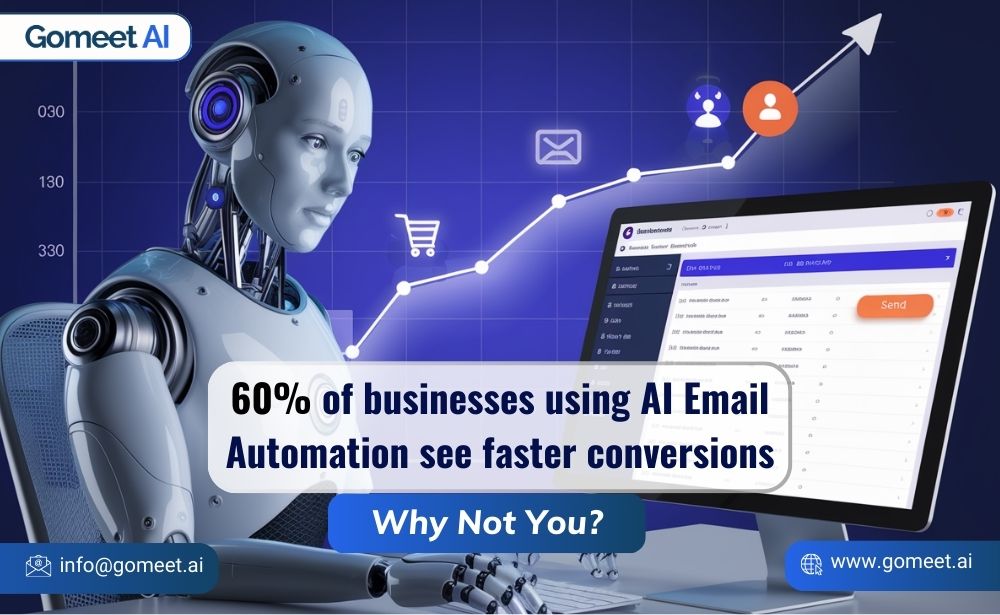Emails have long been considered an essential tool in marketing, but they’re more than just a means to deliver a message. In B2B sales, emails are powerful drivers of conversations and relationships. Yet, the potential of email communication often remains untapped when teams rely solely on manual processes. This is where AI email automation comes into play, elevating emails from routine marketing tasks to a strategic force that enhances communication and engagement.
By automating email writing, personalizing outreach at scale, and analyzing responses in real-time, AI transforms the depth and quality of B2B conversations. It doesn’t just make the process faster; it makes it smarter, more accurate, and ultimately more effective. Businesses that embrace AI in email communication are experiencing significantly higher engagement rates and an overall more efficient sales pipeline.
This blog delves into the untapped power of AI in email communication, uncovering how it changes the way businesses interact with leads and prospects.
The Untapped Potential of AI Email Automation
Traditional email writing, while necessary, can be labor-intensive and lacks the dynamic adaptability that modern communication requires. Sales teams often spend countless hours drafting, editing, and sending emails manually, which limits their ability to engage a larger audience or personalize outreach at scale. AI email writing changes this by introducing intelligent, data-driven automation that crafts messages designed to resonate with the recipient on a personal level.
Key Benefits of AI Email Writing:
- Comprehensive Messaging: AI leverages historical data, interaction patterns, and behavioral insights to create nuanced messages that feel personal and relevant to the recipient.
- Adaptability: AI can adjust email content based on real-time feedback, such as whether a recipient opened or ignored previous emails.
- Enhanced Engagement: By tailoring responses to each recipient’s unique behavior, AI email writing significantly improves engagement rates, turning cold leads into warm prospects.
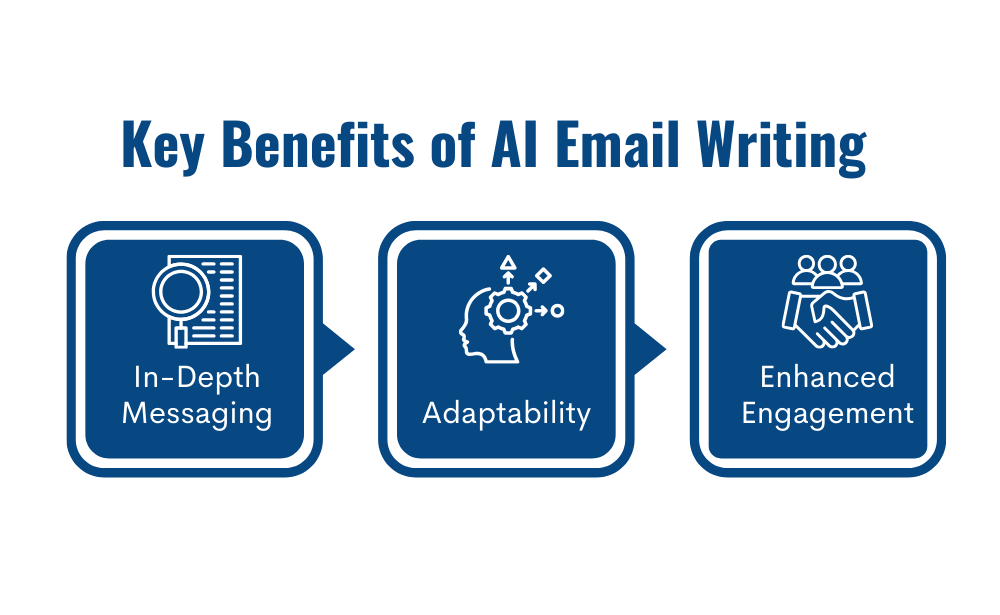
AI’s Role in Personalized Communication:
- Real-time data usage: AI can instantly analyze a recipient’s past interactions, web visits, and even their content preferences to craft tailored emails. Whether it’s understanding their preferred time to engage or knowing which subject lines spark interest, AI ensures that each email feels personal.
- Behavioral insights: Emails aren’t just scheduled—they’re sent at the right time, with the right message, based on a recipient’s digital behavior. If a prospect engages more with educational content versus direct sales offers, AI will prioritize that type of content, improving chances for future engagement.
By tapping into the hidden potential of AI-powered personalized emails, businesses can boost their open and response rates without spending hours crafting individual messages. This not only frees up time for sales teams but also improves the likelihood of converting leads into paying customers.
Hyper Personalization: The Future of AI-Powered Emails
Personalization has always been a cornerstone of effective email marketing, but personalizing each message for hundreds or thousands of prospects is impractical without automation. This is where AI-powered personalized emails come into play, providing the ability to personalize communication at scale without sacrificing quality.
How AI-Powered Personalization Works:
- AI analyzes vast data sets: AI assesses everything from customer demographics to engagement history, allowing it to generate hyper-personalized content. Each recipient receives an email that speaks directly to their pain points, needs, and behavior.
- Automated segmentation: AI automatically segments email lists based on behavior, ensuring that each group receives content tailored to their specific needs. AI can categorize recipients based on previous responses, purchase history, or browsing behavior.
- Real-time message adaptation: AI continually refines its approach based on ongoing engagement data, optimizing emails to ensure they remain relevant. As prospects interact with the content, AI adjusts future messages to keep the engagement fresh and valuable.
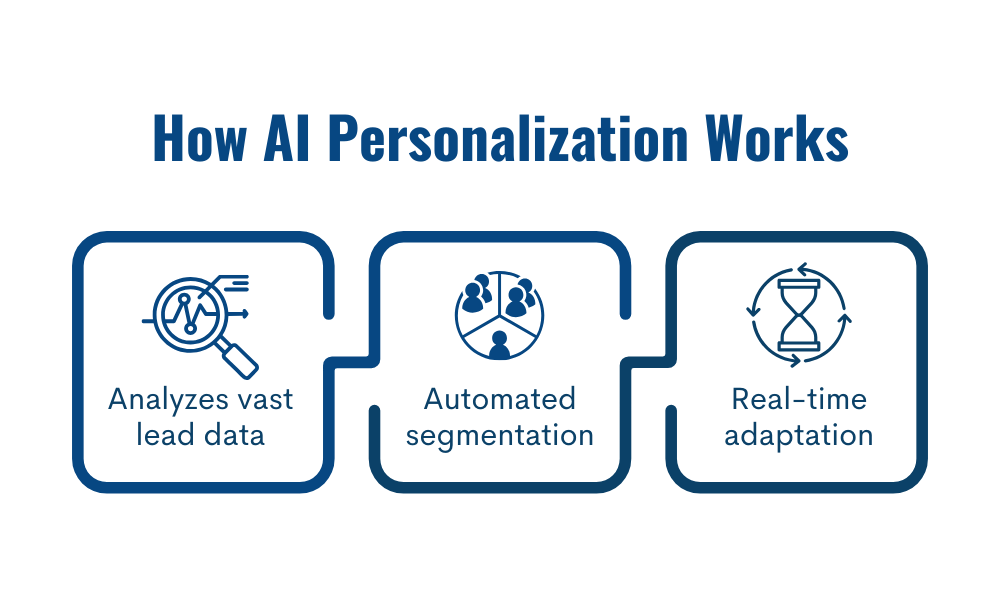
Comparing Human vs. AI Personalization:
- Human-driven personalization: Time-consuming, difficult to scale, prone to error, and often relies on intuition. Sales teams can only send personalized emails to a limited number of prospects, and there’s no guarantee of consistent messaging.
- AI-driven personalization: Automated, data-backed, highly scalable, and capable of optimizing content in real time. With AI, personalized communication happens at scale, allowing businesses to reach more leads with less effort and greater accuracy.
Benefits of Personalization at Scale:
- Increased engagement and click-through rates.
- More meaningful connections with prospects.
- Reduced workload for sales and marketing teams.
By employing AI email automation, businesses can overcome the limitations of manual outreach and achieve higher engagement rates with less effort. The combination of scalability and personalization creates more touchpoints with leads and increases conversion potential.
AI Insights: Understanding the Behavior Behind Every Response
One of the most powerful aspects of AI email automation is its ability to track and analyze responses in real-time, offering detailed insights that go far beyond standard metrics like open rates or clicks. AI provides a deeper understanding of recipient behavior, allowing businesses to make data-driven decisions that improve future outreach.
Key AI Insights in Email Communication:
- Behavioral tracking: AI tracks how recipients interact with emails, from how long they spend reading them to what links they click. This insight helps refine the messaging for future emails.
- Actionable feedback: AI provides real-time feedback on what’s working and what’s not, allowing teams to make adjustments on the fly. Teams can pivot strategies if one campaign isn’t performing as expected.
- Content performance analysis: AI identifies which subject lines, calls-to-action, or pieces of content perform best with different audience segments. This data enables teams to tailor future campaigns based on past successes.
Real-Time Adjustments with AI:
- Timing optimization: AI-driven systems can automatically adjust the timing of follow-up emails based on when recipients are most likely to engage.
- Content adaptation: Subject lines, email length, and even tone can be adapted based on what resonates most with your audience. AI ensures that emails are always hitting the right tone and message for maximum impact.
- Mid-campaign adjustments: AI email writing can improve email campaigns by making these adjustments mid-campaign, maximizing efficiency and success. If recipients aren’t opening or engaging with one email, AI will tweak the next in the sequence to be more relevant.
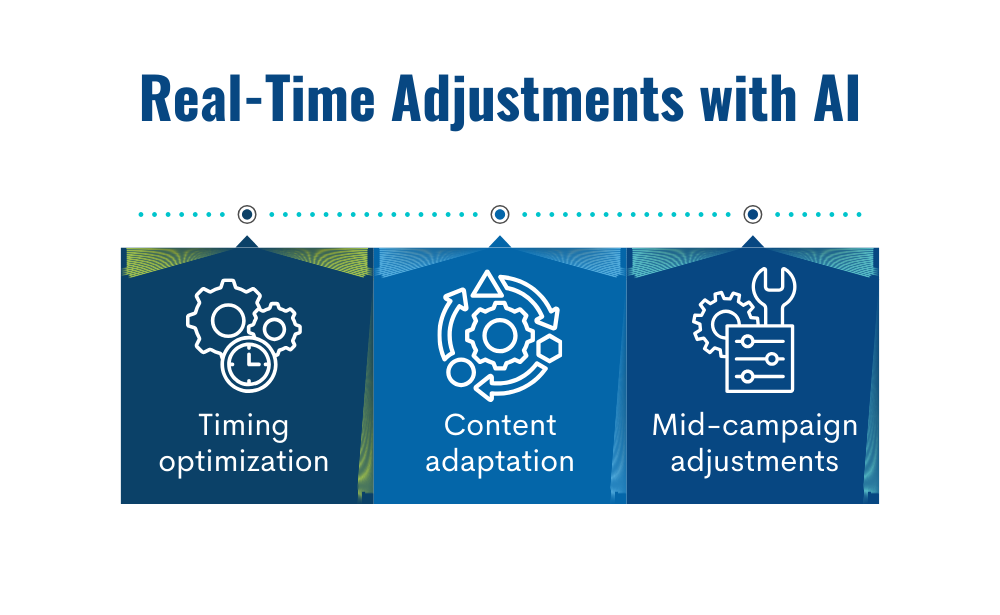
These insights allow sales teams to continuously improve their communication strategies, ensuring every email is optimized for success. Rather than sticking with rigid campaign plans, teams can stay agile and adapt to real-time data, improving their chances of closing deals.
Driving Sales with Intelligent Follow-Ups
Follow-ups are essential in any sales communication, but they can be tricky to time and personalize manually. Send them too soon, and you might annoy the prospect; send them too late, and you risk losing the lead. AI-powered personalized emails solve this dilemma by automating follow-ups with precision, ensuring that each message lands at the right time with relevant content.
How AI Automates Follow-Ups:
- Behavior-driven follow-ups: AI tracks recipient actions (opens, clicks, downloads) and sends follow-up emails based on their activity. Each follow-up is intelligently timed and personalized to keep the conversation going.
- Tailored content: Follow-ups are customized to the recipient’s engagement, ensuring that they feel personal and relevant. This helps move leads further down the sales funnel.
- Automated reminders: AI can schedule follow-up sequences, ensuring that no lead is ever forgotten. This eliminates the need for manual tracking and reduces the risk of missed opportunities.
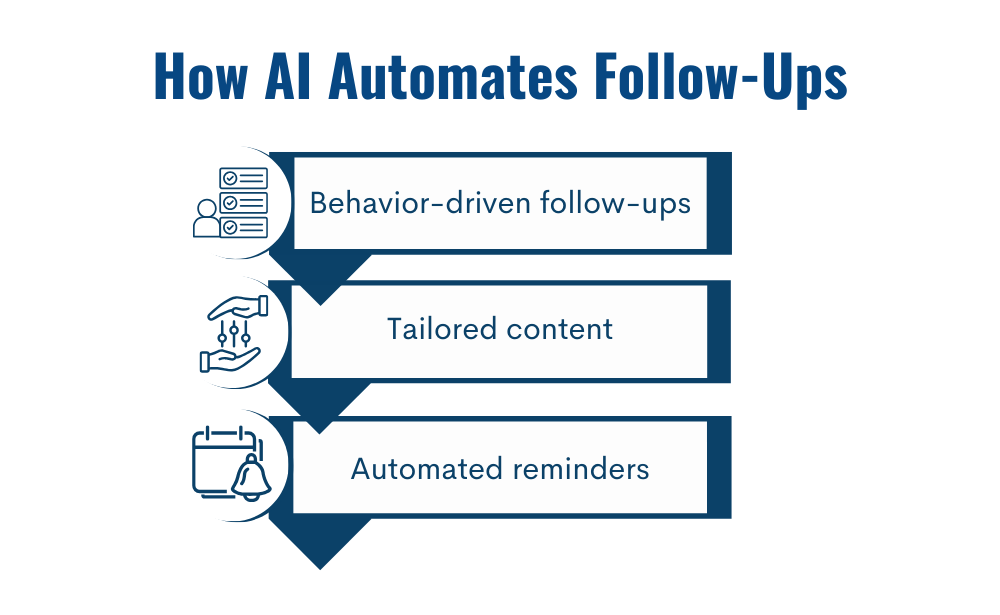
Conclusion
The power of AI email automation goes far beyond simply scheduling emails. It unlocks new possibilities for personalized, real-time communication, helping businesses stay relevant and competitive in the fast-paced world of B2B sales. By leveraging AI-powered personalized emails and using real-time insights to refine strategies, businesses can create deeper connections with prospects and nurture leads more effectively.
As businesses continue to embrace AI-driven solutions, it’s clear that AI is shaping the future of B2B communication—turning email outreach into a powerful tool for growth and engagement.
Ready to elevate your sales communication? Let GoMeet AI help you harness the power of AI email automation to personalize outreach, optimize follow-ups, and drive meaningful engagement—effortlessly. Start transforming your B2B communication today with GoMeet AI.

